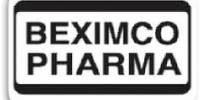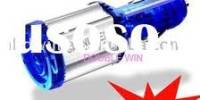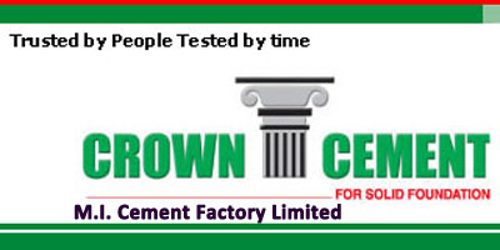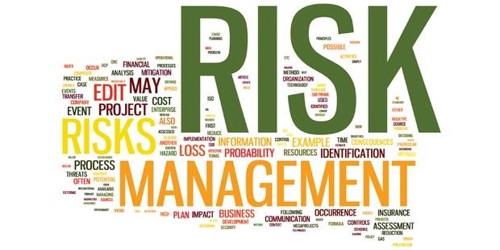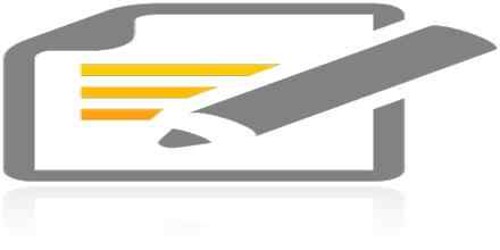Executive Sumary
Coca-cola is a world renowned product and liked by almost all ages, and groups of people.it was established in 1892 by Asa Griggs Candler.since then it has created and maintained its brand image. It is under the Beverage Industry. Its revenue is $24.088 billion USD (2006) and its operating income is $6.308 billion USD (2006) . The net income of this world renowned brand is $5.080 billion USD (2006 ). The number of employees are 55,000. Coca-cola company it self has a slogan and that is Always Coca-cola. But in this report we have generated our own slogan for coca-cola and that is it dosent matter who you are cocacola will change you and your life!!! Coca-Cola is the best-selling soft drink in most countries. Nevertheless, there are some places like Quebec and Prince Edward Island, Canada, where Pepsi is the market leader.[citation needed] In the Middle East, the only region in the world where Coca-Cola is not the number one soda drink, Coca-Cola nonetheless holds almost 25% marketshare (to Pepsi’s 75%) and had double-digit growth in 2003.[4] Similarly, in Scotland, where the locally produced Irn-Bru was once more popular, 2005 figures show that both Coca-Cola and Diet Coke now outsell Irn-Bru.[5] In Peru, the native Inca Kola has been more popular than Coca-Cola, which prompted Coca-Cola to enter in negotations with the soft drink’s company and buy 50% of its stakes. According to the 2005 Annual Report[3], the company sells beverage products in more than 200 countries. The report further states that of the more than 50 billion beverage servings of all types consumed worldwide every day, beverages bearing the trademarks owned by or licensed to Coca-Cola account for approximately 1.3 billion. Of these, beverages bearing the trademark “Coca-Cola” or “Coke” accounted for approximately 55% of the Company’s total gallon sales.
In this report a totally new story board has been generated for Coca-cola from which an advertisement will be produced.
1.0 INTRODUCTION
1.1 ORIGIN:
The origin of this report is the subject Principles of Advertising and Public Relations. Groups were formed by the course instructor and the group with the consent of the instructor selected topic.
1.2 PURPOSE:
Immediate objective of this report is to partially fulfill the requirement of Principles of Advertising and Public Relations (MKT-355) course and thus to learn how story boards are made in the field of advertising.
1.3 SCOPE OF THE STUDY:
The scope of this report is limited within the boundary of preparing storyboard.
1.4 LIMITATIONS:
It is difficult to include all the sequence of for this study for being of –
Time
Money
Lack Of Trustiness
Strong Reference
At first, when we were going to start the report then we didn’t have any strong reference by which we can easily collect our information. Then we went to one of the familiar advertising agency named protishabda communication and collected our
reqired information on creating a story board. The storyboard of this report is based on information orally provided by the individuals of protishabda communication
1.5: METHODOLOGY OF COLLECTING DATA
We have collected data from two sources such as:-
Primary source
Secondary source
Primary source:
This report is basically prepared by following the class lecture and on the basis of our mid term exam
Secondary Method:
Protisahabda Communication the advertising firm helped us by showing some sample story board which they have prepared for some other advertisers earlier. They also gave us some valuable tips on making a well decorated story board,which are difficult to show in this report. But we tried to follow their instruction and tried our level best.
1.6: THEORY
Theory will comprise some steps which will describe clearly
• Our segmented group
• what kind of advertisement is this
• Which media we will select.
• Market Coverage.
Segmentation- We will segment our target group based on demography and psychographics which covers a wide area. More over Coca-Cola is an international product, so demographic segmentation will be the right choice.
Types of Advertisement- It falls both under the Acceptance and Reinforcement phases.
Media Selection: We will select the electronic media, because it covers the mass market and more over Coca-Cola is for mass people.
Market Coverage- It is an international product, so it will cover the mass market.
2.0 COMPANY PROFILE
AT A GLANCE
Type Public (NYSE: KO)
Founded 1892 by Asa Griggs Candler
Headquarters Atlanta, Georgia, USA
Key people E. Neville Isdell, CEO & Chairman
Industry Beverage
Products Beverages
Revenue $24.088 billion USD (2006) [[1]]
Operating income $6.308 billion USD (2006) [[2]]
Net income $5.080 billion USD (2006) [[3]]
Employees 55,000 (2005)
Slogan of the coca-cola company Always Coca-Cola
COMPANY PROFILE (COCA-COLA)
The Coca-Cola Company (NYSE: KO) is the largest manufacturer, distributor and marketer of nonalcoholic beverage concentrates and syrups in the world. Coca-Cola’s headquarters are in Atlanta, Georgia, in the United States of America. It is best known for its flagship product, Coca-Cola, and is one of the largest corporations in the United States. The company’s stock is listed on the NYSE and is part of DJIA and S&P 500.
Coca-Cola was invented by pharmacist John Stith Pemberton in 1884. According to the 2005 Annual Report, the company sells beverage products in more than 200 countries. In general the Coca-Cola Company (TCCC) only produces syrup concentrate which is then sold to various bottlers throughout the world who hold a Coca-Cola franchise. The Coca-Cola Company offers nearly 400 brands in over 200 countries, besides its namesake Coca-Cola beverage.
One of the Coca-Cola Company’s headquarters buildings in Atlanta, GA.
Pharmacist John Stith Pemberton invented a cocawine called Pemberton’s French Wine Coca in 1884. He was inspired by the formidable success of French Angelo Mariani’s cocawine, Vin Mariani. The following year, when Atlanta and Fulton County passed Prohibition legislation, Pemberton began to develop a non-alcoholic version of the French Wine Coca. He named it Coca-Cola, because it included the stimulant coca leaves from South America and was flavored using kola nuts, a source of caffeine. Pemberton ran the first advertisement for the beverage on May 29 that year in the Atlanta Journal. In 1887, while suffering from an ongoing addiction to morphine, Pemberton sold a stake in his company to Asa Griggs Candler, who incorporated it as the Coca Cola Corporation in 1888.[1] In the same year, Pemberton sold the rights a second time to three more businessmen: J.C. Mayfield, A.O. Murphey, and E.H. Bloodworth. Meanwhile, Pemberton’s alcoholic son Charley Pemberton began selling his own version of the product. Three versions of Coca-Cola — sold by three separate businesses — were on the market.[2]
CURRENT BOARD OF DIRECTORS
• E. Neville Isdell (CEO since June 2004)[11]
• Herbert A. Allen[12]
• Ronald W. Allen
• Cathleen Black
• Barry Diller
• Donald Keough
• Donald McHenry
• Sam Nunn
• James Robinson
• Peter Ueberroth
• James B. Williams
PRODUCTS AND BRANDS
Diet Coke was introduced in 1982 to offer an alternative to dieters worried about the high number of calories present in Classic Coke.
Main article: Coca-Cola brands
The Coca-Cola Company offers nearly 400 brands in over 200 countries, besides its namesake Coca-Cola beverage. This includes other varieties of Coca-Cola such as Diet Coke (introduced in 1982), which uses aspartame, a synthetic phenylalanine-based sweetener, to eliminate the sugar content of the drink; Caffeine-free Coke; Cherry Coke (1985); Diet Cherry Coke (1986); Coke with Lemon (2001); Diet Coke with Lemon (2001); Vanilla Coke (2002); Diet Vanilla Coke (2002); Coca-Cola C2 (2004); Coke with Lime (2004); Diet Coke with Lime (2004); Diet Coke with Splenda (2005), Coca-Cola Zero (2005), Coca-Cola Black Cherry Vanilla (2006), Diet Coca-Cola Black Cherry Vanilla (2006), and Coca-Cola BlāK
Tab was Coca-Cola’s first attempt to develop a diet soft drink, using saccharin as a sugar substitute. Introduced in 1963, the product is still sold today, however its sales have dwindled since the introduction of Diet Coke.
The Coca-Cola Company also produces a number of other soft drinks including Fanta (introduced circa 1942 or 1943) and Sprite. Fanta’s origins date back to World War II when Max Keith, who managed Coca-Cola’s operations in Germany during the war, ran out of the ingredients for Coke, which could be supplied only from the United States. Keith resorted to producing a different soft drink, Fanta, which proved to be a hit, and when Coke took over again after the war, it adopted the Fanta brand as well. The German Fanta Klare Zitrone (“Clear Lemon Fanta”) variety became Sprite, another of the company’s bestsellers and its response to 7 Up.
During the 1990s the company responded to the growing consumer interest in healthy beverages by introducing several new non-carbonated beverage brands. These included Minute Maid Juices to Go, Powerade sports beverage, flavoured tea Nestea (in a joint venture with Nestle), Fruitopia fruit drink and Dasani water, among others.
In 2004, perhaps in response to the burgeoning popularity of low-carbohydrate diets such as the Atkins Diet, Coca-Cola announced its intention to develop and sell a low-carbohydrate alternative to Coke Classic, dubbed C2 Cola. C2 contains a mix of high fructose corn syrup, aspartame, sucralose, and Acesulfame potassium. C2 is designed to more closely emulate the taste of Coca-Cola Classic. Even with less than half of the food energy and carbohydrates of standard soft drinks, C2 is not a replacement for zero-calorie soft drinks such as Diet Coke. C2 went on sale in the U.S. on June 11, 2004, and in Canada in August 2004. C2’s future is uncertain due to disappointing sales.
Coca-Cola is the best-selling soft drink in most countries. Nevertheless, there are some places like Quebec and Prince Edward Island, Canada, where Pepsi is the market leader.[citation needed] In the Middle East, the only region in the world where Coca-Cola is not the number one soda drink, Coca-Cola nonetheless holds almost 25% marketshare (to Pepsi’s 75%) and had double-digit growth in 2003.[4] Similarly, in Scotland, where the locally produced Irn-Bru was once more popular, 2005 figures show that both Coca-Cola and Diet Coke now outsell Irn-Bru.[5] In Peru, the native Inca Kola has been more popular than Coca-Cola, which prompted Coca-Cola to enter in negotations with the soft drink’s company and buy 50% of its stakes.
Some claim Coke is less popular in India due to suspicions regarding the health standards of the drink. However, marketshare data does not back this view. Specifically, in 2005, Coca-Cola India’s market share was 60.9%.[6] However, Thums Up, a brand acquired by The Coca-Cola Company contributes a major part of this market share rather than Coke per se, which lags both Thums Up and Pepsi.
On July 6, 2006, a Coca-Cola employee and two other people were arrested and charged with trying to sell “highly classified” information to the soft drink maker’s competitor, PepsiCo for $1.5 million. The recipe for Coca-Cola, perhaps the company’s most closely guarded secret, was never in jeopardy. Instead, the information was related to a new beverage in development. Coca-Cola executives verified that the documents were valid and proprietary. At least one glass vial containing a sample of a new drink was offered for sale, court documents said. The conspiracy was revealed by PepsiCo, which notified the authorities when they were approached by the conspirators.[7]
The company annouced a new “negative calorie” green tea drink, Enviga, in 2006, along with trying coffee retail concepts Far Coast and Chaqwa.
REVENUE
According to the 2005 Annual Report[3], the company sells beverage products in more than 200 countries. The report further states that of the more than 50 billion beverage servings of all types consumed worldwide every day, beverages bearing the trademarks owned by or licensed to Coca-Cola account for approximately 1.3 billion. Of these, beverages bearing the trademark “Coca-Cola” or “Coke” accounted for approximately 55% of the Company’s total gallon sales.
Also according to the 2005 Annual Report, Coca-Cola had gallon sales distributed as follows:
• 27% in the United States
• 27% in Mexico, Brazil, Japan and China
• 46% in spread throughout the world
In 2005, Coca-Cola had equity positions in 51 unconsolidated bottling, canning and distribution operations which produced approximately 58% of volume. Significant investees include:
• 36% of Coca-Cola Enterprises which produces (by population) for 78% of USA, 98% of Canada and 100% of Great Britain (but not Northern Ireland), continental France and the Netherlands, Luxembourg, Belgium and Monaco.
• 40% of Coca-Cola FEMSA, S.A. de C.V. which produces (by population) for 48% of Mexico, 16% of Brazil, 98% of Colombia, 47% of Guatemala, 100% of Costa Rica, Nicaragua, Panama and Venezuela, and 30% of Argentina.
• 24% of Coca-Cola Hellenic Bottling Company S.A. which produces (by population) for 67% of Italy and 100% of Armenia, Austria, Belarus, Bosnia-Herzegovina, Bulgaria, Croatia, the Czech Republic, Estonia, Greece, Hungary, Latvia, Lithuania, Macedonia, Moldova, Nigeria, Northern Ireland, Poland, Rep. of Ireland, Romania, Russia, Serbia and Montenegro, Slovakia, Slovenia, Switzerland and Ukraine.
• 34% of Coca-Cola Amatil which produces (by population) for 98% of Indonesia and 100% of Australia, Indonesia, New Zealand, South Korea, Fiji and Papua New Guinea.
27% of Coca-Cola Bottling Co. which is the second largest Coca-Cola bottler in the United States. The company was incorporated in 1980, and “its predecessors have been in the soft drink manufacturing and distribution business since 1902.”
3.0 AVERTISEMENT STORY
SAMPLE STORY BOARD ON TV:
Board 1 – In a dark, old house all the blood sucker’s means Dracula are sleeping.
Board 2 – Now its 12 o’clock night, hunting time for the thirsty blood sucker from human body.
Board 3- Let’s hunt!!!!!
Board 4 – While searching for it preys all of a sudden it finds a shopkeeper closing his shop all alone in the middle of the night.
Board 5 – Suddenly the Dracula comes in front the shopkeeper and tells him that he is here to suck his blood right now
Board 6 – The shopkeeper gets frightened and urges the blood sucker to release him. But the Dracula refuses to do that……………………
Board 7–Then the shopkeeper gets an idea to save his life.
Board 8– He offers the Dracula a drink from his shop which resembles the color of blood and ensures the blood sucker that it will be hundred times tasty than the blood he used to drink…………………….
Board 9– The Dracula agrees but also gives a condition that if the drink is not tasty then he will suck all the blood of the shopkeeper and let him die.
Board 10- The shopkeeper gives the bottle of coca-cola to the Dracula. After a small sip the expression of the face suddenly changes and he agrees with the shopkeeper that the coca-cola is hundred times better and tasty than the blood of human body he use to drink.
4.0 CONCLUTION:
At last we want conclude that the idea of the story board is very authentic and was produced by the group members combinedly. We hope that the story board will make a clear sense and will satisfy the need of the Coca-Cola Company. As Coca-Cola is an international product, for that while making the story board we have tried to make the story easy, interesting and understandable for the mass people. We proudly want to state that our objective and mission for this report has been accomplished successfully.


